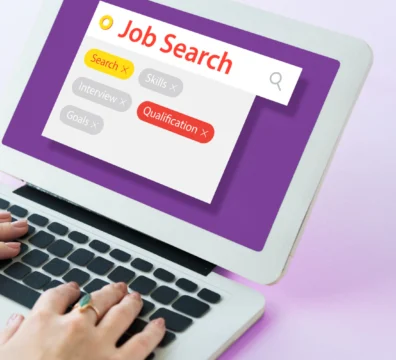Employee onboarding is essential for a fruitful collaboration between new joinees and employers. But it can also be a time-consuming work. Are you wondering whether to automate employee onboarding in your company?
If you are targeting the top talents in the market, you must invest in an excellent onboarding process. A streamlined onboarding process ensures
- improved employee experience
- clear communication between the team and the management
- an effective workflow
Recent research says an excellent onboarding process can improve the new hire retention rate by 82% while improving productivity by over 70%. However, with digitisation everywhere, automating your onboarding process saves time and resources and benefits you in numerous ways.
This article shares everything about an automated onboarding process in organisations and how to implement one
What Does it Mean to Automate Employee Onboarding?
Employee onboarding is an essential step in hiring new employees for your organisation. It gives your employees a clear insight into your organisation, work culture, and your expectations of them. A superior automated onboarding checklist can enhance employee retention and productivity.
However, it is associated with numerous repetitive tasks like documentation, sending reminders, and addressing common questions. Therefore, the onboarding process can be mundane, time-consuming, and error-prone to recruiters and needs digital support for better workflows.
Automated employee onboarding solutions not only save recruiters time but also help them create great impressions on new talents. Research says using automation for onboarding activities leads to a 16% improvement in new employees’ retention rate.
Why Automate Employee Onboarding for Organisations?
You can automate employee onboarding in your company for various purposes. Besides the recruiter, it helps IT teams, accounting departments, company management and leaders, and customer service departments in different ways.
Here, we have listed some of its benefits in organisations.
Process Employee Documents Faster
Your automated onboarding system can speed up the documentation process. Thus giving your new hires more time for introductions and building connections with peers.
You can use multiple tools to create a welcome package with all the documents, including contract manuals, policies, etc., for employees. They can review the papers beforehand and clarify their doubts before starting to work.
Automatically Collect Employee Data
These systems help you automatically gather all necessary new employee data, including their previous payroll, taxes, medical benefits, etc. When you have all these details automatically updated on employee record systems, it eliminates the chances of human errors.
Increases New Hires’ Engagement
Most new joiners get disappointed when their recruiters respond late. It usually happens due to their tough schedule of handling paperwork and ongoing administration tasks. However, when you automate employee onboarding tasks, you save time for one-to-one conversations. Additionally, if you use AI-powered bots on your onboarding system, they respond to common employee queries efficiently.
Saves Recruiters Times
Numerous onboarding tasks are repetitive and time-consuming. For example, signing documents and manually inputting new hires’ data into different HR tools. When you automate employee onboarding process, you save ample time on mundane tasks and focus on core activities.
Reduced Operational Cost
You spend a huge timeframe and resources in hiring candidates. However, due to a poor onboarding process, many new joiners can leave after a few months or even weeks. This leads to substantial loss of money, and to prevent such failures, you must automate employee onboarding process.
How to Automate Employee Onboarding Process?
It is challenging to automate employee onboarding as a whole, but you prioritise a few processes to improve the overall employee experience. Here are a few to add to your automated onboarding checklist
Manage Employee Data Using a Unified System
You can create a personal, secure workflow system to automate data generation and minimise paperwork. For example, if you collect employee data in one system, it becomes easy for you to understand their hard and soft skills, proficiency, experiences, and education.
Additionally, you can use different data visualisation tools to leverage this data for multiple organisational needs.
Utilise an HR Information System (HRIS)
You can implement an HR information system for an automated new hire process. It can automate most of your administrative tasks involved with onboarding, including managing employee data, completing paperwork, scheduling meetings or training sessions, etc. Additionally, your hiring team can create personalised onboarding checklists and workflows for each new hire’s needs.
You can also integrate with HR systems to automatically sync employee data with HR databases. It minimises the risk of data duplication and improves data integrity in your system.
Implement a Virtual Onboarding Platform
Several organisations use virtual onboarding platforms for pre-onboarding activities. For instance, they can help you share important information and company policies with fresh hires. You can also assign a virtual bot to help new members adjust to virtual tours or collaborations with other employees and respond to common queries in real time.
Furthermore, you can use interactive orientation materials with your onboarding system to offer engaging multimedia materials. It helps employees to familiarise themselves with company culture policies and key contacts.
Install a Learning Management System (LMS)
Your employee onboarding tool must include an LMS for the training and development of new hires. Recruiters often train their new employees during onboarding to make them effective organisational contributors. This LMS allows employees to learn about their roles, company policies, and procedures at their own pace without needing a mentor.
Otherwise, you can include personalised training modules with your onboarding system to deliver tailored training content to new hires.
How 6 Pence Helps
By now, you must have understood the need to automate employee onboarding. Most companies see a dual role for automating onboarding, preparing new hires quickly for the position, and shaping their first impressions on new joiners.
If you want to find qualified talents for your open position while streamlining your post-hiring process, including a seamless onboarding, connect with 6 Pence to learn more about our staff outsourcing process.
Our experienced recruiters help to find employees and fill open vacancies fast. We also extend our assistance in the post-hiring phase and help with the following:
- Onboarding
- Employee training
- Payroll processing
- Paperwork processing
- Work visa filing for international hires
- Access to 24/7 HR e-service portal, allowing for easy maintenance of leave applications, etc.
For further information, connect with us today!
Also Read : 7 Benefits of a Payroll Management System
Frequently Asked Questions
What is the employee onboarding workflow?
Employee onboarding workflow refers to integrating new hires into your organisation, including introductory orientation, training employees, giving them clear insights into company goals and values, and understanding their responsibilities better.
Why automate the onboarding process?
Automated onboarding processes enhance candidate experience throughout the procedure, reduce organisational time and resources, train and prepare new employees for the role, and improve overall productivity.
What are the 4 phases of employee onboarding?
The four phases of the employee onboarding process in organisations include
- pre-onboarding
- welcoming new hires
- job-specific training
- ease of transition to their new role




































































































